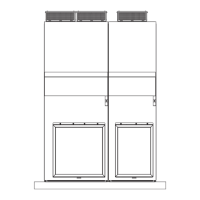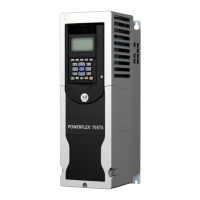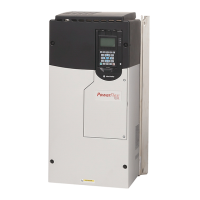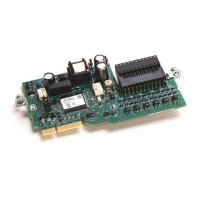186 Rockwell Automation Publication 750COM-UM009A-EN-P - May 2017
Glossary
RSLogix 5000 Software RSLogix® software is a tool to configure and monitor controllers to
communicate with connected devices. It is a 32-bit application that runs on
various Windows operating systems. Information about RSLogix software can
be found at http://www.software.rockwell.com/rslogix
. See also Studio 5000
environment.
Status Indicators Light-emitting diodes that are used to report the status of the interface,
network, and drive. The status indicators for the interface can be viewed on the
front cover of the drive when the drive is powered.
Stop Action When communication is disrupted (for example, a cable is disconnected), the
interface and drive can respond with a stop action. A stop action results in the
drive receiving zero as values for logic command, reference, and datalink data
and an additional command that causes the drive to stop.
Studio 5000 Environment The Studio 5000 Engineering and Design Environment combines engineering
and design elements into a common environment. The first element in the
Studio 5000 environment is the Logix Designer application. The Logix
Designer application is the rebranding of RSLogix 5000 software. It continues
to be the product to program Logix 5000 controllers for discrete, process,
batch, motion, safety, and drive-based solutions.
The Studio 5000 environment is the foundation for the future of Rockwell
Automation engineering design tools and capabilities. It is the one place for
design engineers to develop all elements of their control system.
Subnet Mask An extension to the IP addressing scheme that lets you use one network ID for
multiple physical networks. A bit mask identifies the part of the address that
specifies the network and the part of the address that specifies the unique node
on the network. A ‘1’ in the subnet mask indicates the bit is used to specify the
network. A ‘0’ in the subnet mask indicates that the bit is used to specify the
node.
For example, a subnet mask on a network can appear as follows: 11111111
11111111 11111111 11000000 (255.255.255.192). This mask indicates that
26-bits are used to identify the network and 6-bits are used to identify devices
on each network. Instead of a physical Class C network with 254 devices, this
subnet mask divides it into four networks with up to 62 devices each.
Switches Network devices that provide virtual connections that help to control
collisions and reduce traffic on the network. They are able to reduce network
congestion by transmitting packets to an individual port only if they are
destined for the connected device. In a control application, in which real-time
data access is critical, network switches can be required in place of hubs.
TCP (Transmission
Control Protocol)
EtherNet/IP uses this protocol to transfer Explicit Messaging packets over IP.
TCP helps ensure delivery of data by using retries.
UDP (User Datagram Protocol) EtherNet/IP uses this protocol to transfer I/O packets by using IP. UDP
provides a simple, but fast capability to send I/O messaging packets between

